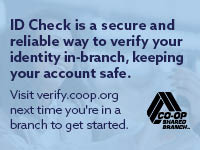For most kids, back-to-school shopping is all about finding the perfect pencil bag or backpack. But as their parents, it’s up to you to take it up a notch and use it to teach them a few financial lessons as well:
- Budgeting– Work with your kids to put together a shopping list and then a budget of what they can spend on their school supplies and even clothes. Be sure to take the list with you when you shop – and remember to stick to your budget.
- Comparison Shopping– Thanks to store websites and weekly flyers, you can get a good idea of what those pencil bags and backpacks will cost and who has the best price. Write the name of the stores next to the items on your list.
- Needs vs. Wants– This is a valuable lesson for kids, one you’ll probably need to keep reminding them of as they grow! You can prioritize your list to the items they really need for school vs. what they just want. Let them know that you’ll have to buy the items on the “need” section of the list and then maybe splurge on a “want” once all your shopping is done and you have some leftover money.
- Low vs. High– This lesson is especially relevant when it comes to clothes shopping. Does your child have to have the latest $200 sneakers? You have two great choices here. One, either explain how much they could actually get for their $200 if they picked a $50 pair and then spent the rest on other clothing. Two, you could find a comparable yet lesser expensive pair of sneakers, jeans or whatever high-price item you’re battling over. If they can’t live without those $200 sneakers, offer to pay $50 of it – or the price of a regular pair of sneakers – and they have to pay the rest. They may soon realize they don’t really want those high-price sneakers after all!
- Cash vs. Credit– As with most shopping, it’s ideal to use cash when back-to-school shopping instead of credit cards. Let your child understand the difference and why it’s better and usually less expensive to pay cash for items rather than pay by credit and accrue interest.
- Earning More– If your child decides they must have items beyond their budget, you can give them the option to work off the balance. Explain your monthly income and expenses, highlighting that you get paid for the work you do and that you try not to spend more than you earn.
The above are all lessons you may need to teach over several back-to-school seasons, depending on your child’s age. Or you may need to repeat them every year or so to refresh their memories on good financial habits.


